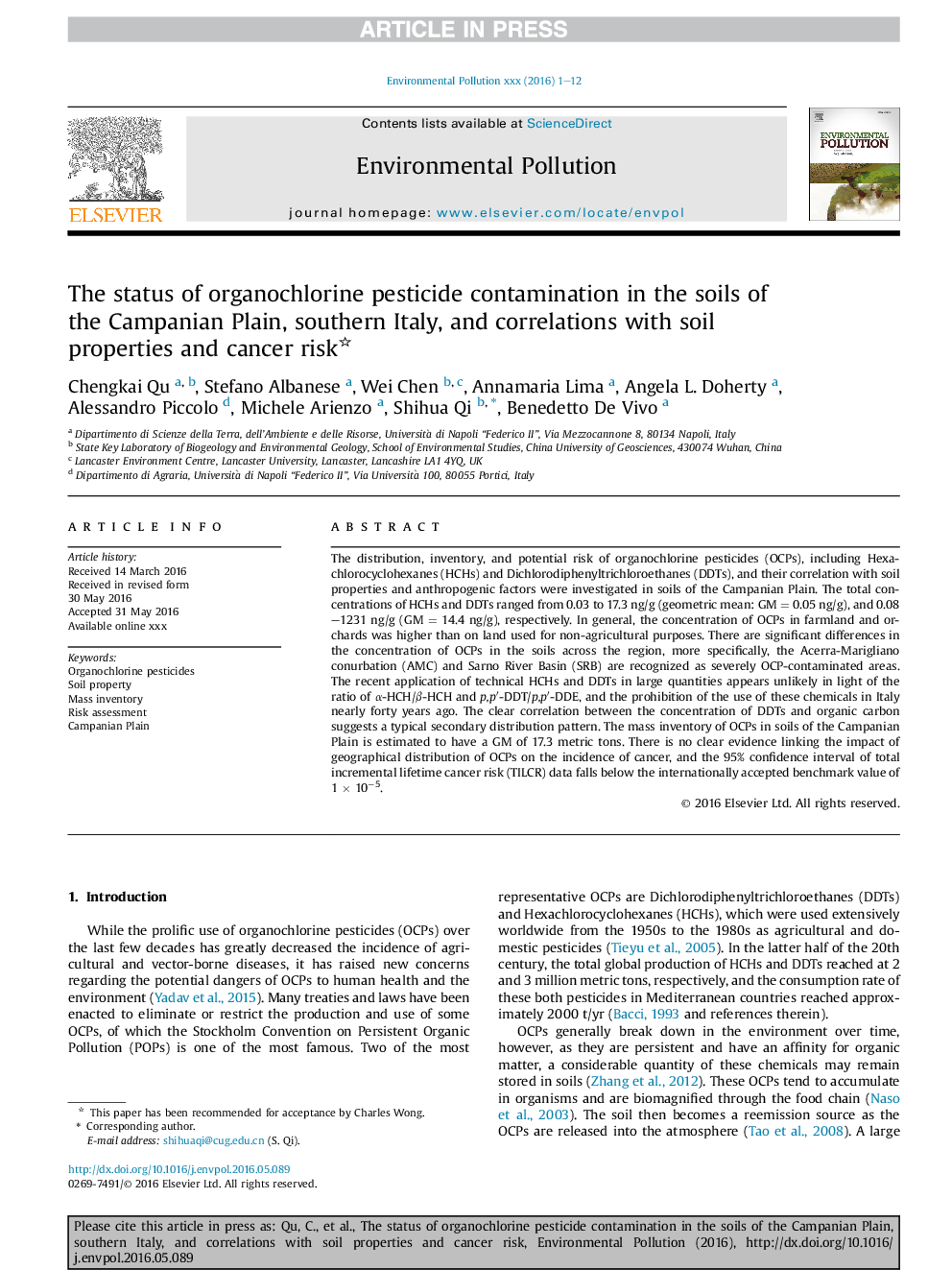| Article ID | Journal | Published Year | Pages | File Type |
|---|---|---|---|---|
| 6315882 | Environmental Pollution | 2016 | 12 Pages |
Abstract
The distribution, inventory, and potential risk of organochlorine pesticides (OCPs), including Hexachlorocyclohexanes (HCHs) and Dichlorodiphenyltrichloroethanes (DDTs), and their correlation with soil properties and anthropogenic factors were investigated in soils of the Campanian Plain. The total concentrations of HCHs and DDTs ranged from 0.03 to 17.3 ng/g (geometric mean: GM = 0.05 ng/g), and 0.08-1231 ng/g (GM = 14.4 ng/g), respectively. In general, the concentration of OCPs in farmland and orchards was higher than on land used for non-agricultural purposes. There are significant differences in the concentration of OCPs in the soils across the region, more specifically, the Acerra-Marigliano conurbation (AMC) and Sarno River Basin (SRB) are recognized as severely OCP-contaminated areas. The recent application of technical HCHs and DDTs in large quantities appears unlikely in light of the ratio of α-HCH/β-HCH and p,pâ²-DDT/p,pâ²-DDE, and the prohibition of the use of these chemicals in Italy nearly forty years ago. The clear correlation between the concentration of DDTs and organic carbon suggests a typical secondary distribution pattern. The mass inventory of OCPs in soils of the Campanian Plain is estimated to have a GM of 17.3 metric tons. There is no clear evidence linking the impact of geographical distribution of OCPs on the incidence of cancer, and the 95% confidence interval of total incremental lifetime cancer risk (TILCR) data falls below the internationally accepted benchmark value of 1 Ã 10â5.
Related Topics
Life Sciences
Environmental Science
Environmental Chemistry
Authors
Chengkai Qu, Stefano Albanese, Wei Chen, Annamaria Lima, Angela L. Doherty, Alessandro Piccolo, Michele Arienzo, Shihua Qi, Benedetto De Vivo,
